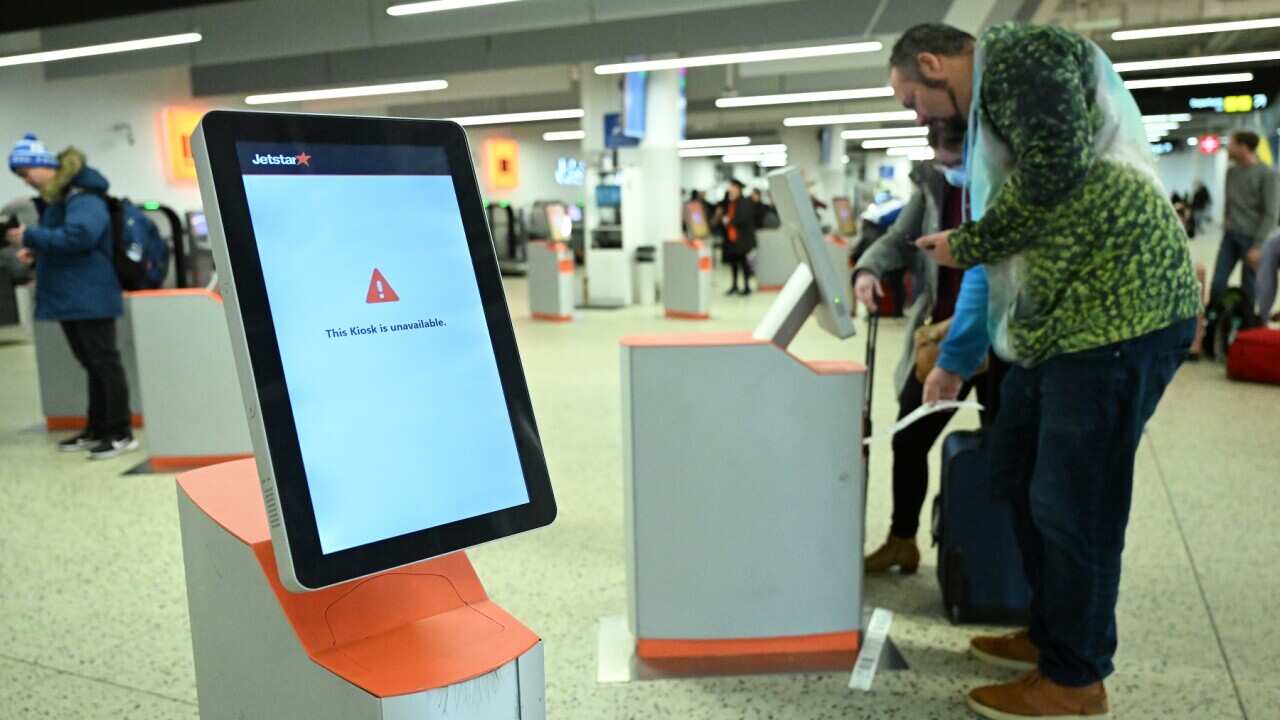TRANSCRIPT
One man is dead and at least thirty others are injured, after a Singapore Airlines flight hit severe turbulence en route to Singapore from London.
Airline crew were serving breakfast when the Boeing 777 fell into an air pocket, flinging people around the cabin and forcing the pilot to declare a medical emergency and land in Bangkok.
Passengers have described objects hurtling through the air and people's heads slamming so hard against the overhead compartments that they caused punctures in the panels.
At least seven people are critically wounded, several with head injuries.
The general manager of Suvarnabhumi airport - where the flight landed - later confirmed a 73-year-old man from the UK had died.
Kittipong Kittikachorn told reporters autopsy has yet to be completed, but it is believed the man had a heart condition.
"We received the message that a Singapore Airlines flight was seeking to land at Suvarnabhumi airport because a turbulence had injured passengers on-board. That's all we knew at that time - someone was injured. Upon the airliner's landing at Suvarnabhumi airport, medical personnel rushed into the cabin. They found numerous injured passengers and one dead. Suvarnabhumi airport immediately activated an emergency plan, and relevant departments and staff entered the cabin to assist in the rescue."
Singapore Airlines offered condolences to the family of the deceased and apologised for the "traumatic experience" suffered by the passengers and crew.
Chief executive Goh Choon Phong says the airline is "deeply saddened" by the incident on flight SQ321.
"We are fully cooperating with the relevant authorities on the investigations. We will provide updates through our social media channels as more information becomes available. Family members and loved ones on board SQ321 can call our hotlines for further assistance. Once again, our deepest apologies to everyone affected by this incident. Please be assured Singapore Airlines is here to help and support you during this difficult time."
The airline also confirmed 56 of the passengers were Australian - the largest group from one country on board the flight.
The Department of Foreign Affairs and Trade confirmed eight of the hospitalised passengers are Australian, but did not comment on their condition.
Home Affairs Minister Clare O'Neil has told Channel Seven, Australian officials are reaching out to affected Australians.
"This is a terrible experience that these people have gone through. As usual, the Australian government will provide consular assistance wherever we can, wherever it's needed, to those people. I know the embassy in Bangkok and the High Commission in Singapore are actively trying to contact those Australians at the moment. To anyone in our country or if you've got family who are affected, make sure you call Consular Assist. You can find the number on Google, we'll do everything we can to help."
Photographs from the interior of the plane showed large gashes in the overhead cabin panels, gas masks and panels hanging from the ceiling; and items of hand luggage strewn around.
Twenty-eight-year-old student Dzafran Azmir was resting, with his seatbealt secured, when the turbulence hit.
He believes the whole incident happened in just 10 seconds.
"Anybody who was standing, especially the people within the lavatories and were the most injured, from what I've seen. But I saw people from across the aisle just going completely horizontal, hitting the ceiling and landing back down in really awkward positions. People, like, getting massive gashes in the head, concussion."
Mr Azmir praised crew members for their attempts to help others, despite many being injured themselves.
He says most people were caught off guard and he believes it happened so quickly, the airline staff didn't have a chance to activate the seatbelt sign.
"As well as no announcement from the pilot necessarily. I think the pilot was really just trying to deal with the situation before he could even really tell everybody within the plane to brace or hold on or to buckle in. So you really just have to work with your instincts. Like I knew there was a lady behind me, I think from New Zealand who was unbuckled, but she very really quickly buckled in, like the people who didn't respond, who were sleeping were the ones that unfortunately really suffered a lot from the incident."
Tracking data captured by FlightRadar24 showed the plane had been cruising at an altitude of 11,300 metres.
But a sudden shift shows it pitching down to 9,400 metres over the span of some three minutes.
The aircraft stayed at that altitude for just under 10 minutes, before rapidly descending and landing in Bangkok in just under half an hour.
Physicist Larry Cornman studies turbulence at the US National Center for Atmospheric Research.
He says people usually associate turbulence with stormy weather, but the most dangerous and unpredictable situation is actually when two air masses move towards each other at different speeds, creating what's called wind shear.
"When these, breaking wave scenarios, they're packing a lot of energy in a very localised area. So it's very hard to forecast when or where those might occur. And then, you know, what altitude they may occur. So typically, you know, events like this happen because they come without much warning. A pilot may not know what's coming up ahead of them. For example, if it's clear air, aircraft don't have any sensors that can look ahead and see, when changes due to clear air (occur)."
The scientist explains it's not uncommon to see turbulence cause minor injuries - or even a broken bone - but fatalities are extremely rare, especially in a large passenger aircraft.
But for travellers still anxious about their next flight, he says there is a simple thing action they can take that is highly effective.
"One, keep your seatbelt on when you can. That's a major safety. I think everyone knows that pilots tell that to people, but people still are lackadaisical (careless) in doing that. So I think that's key."





